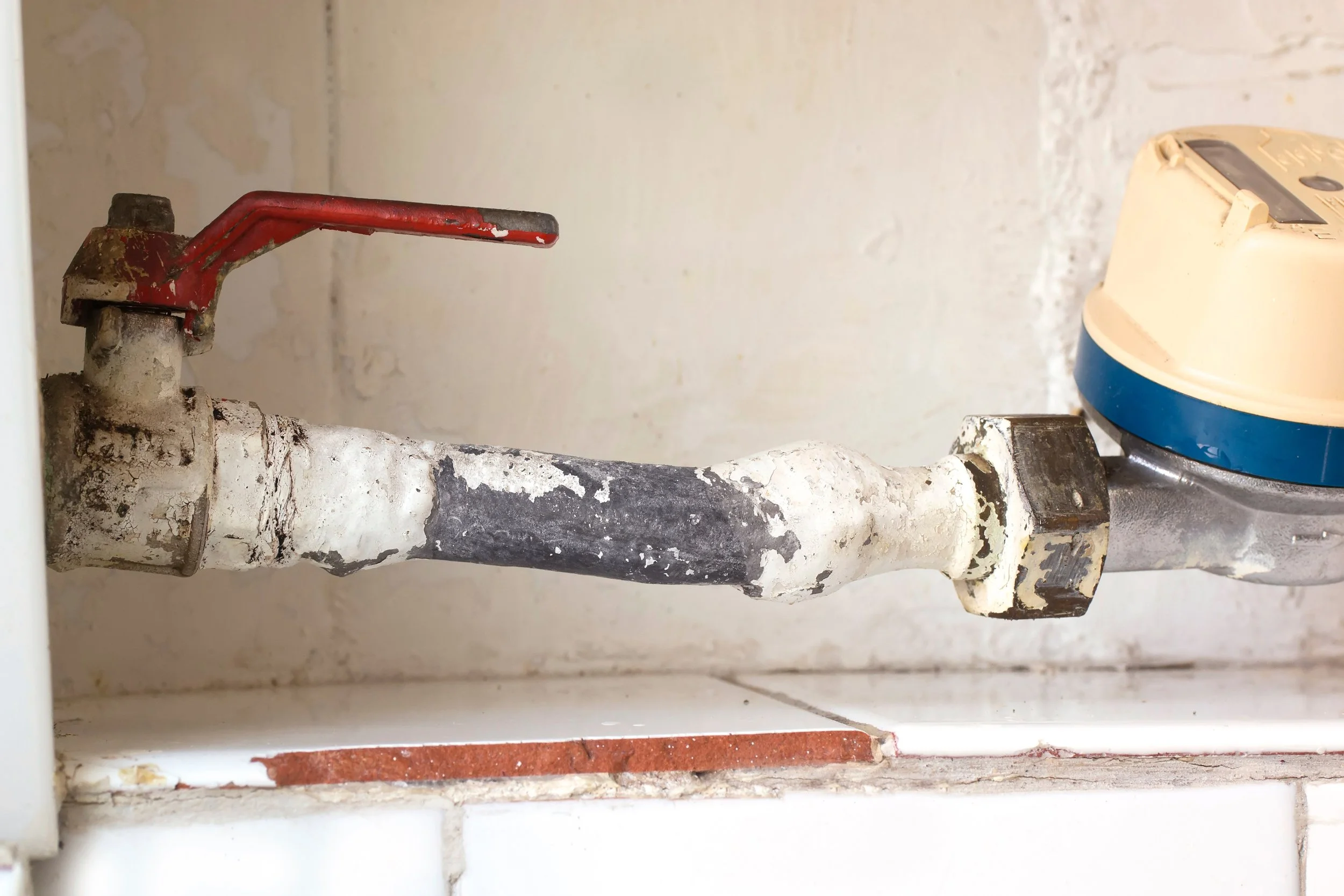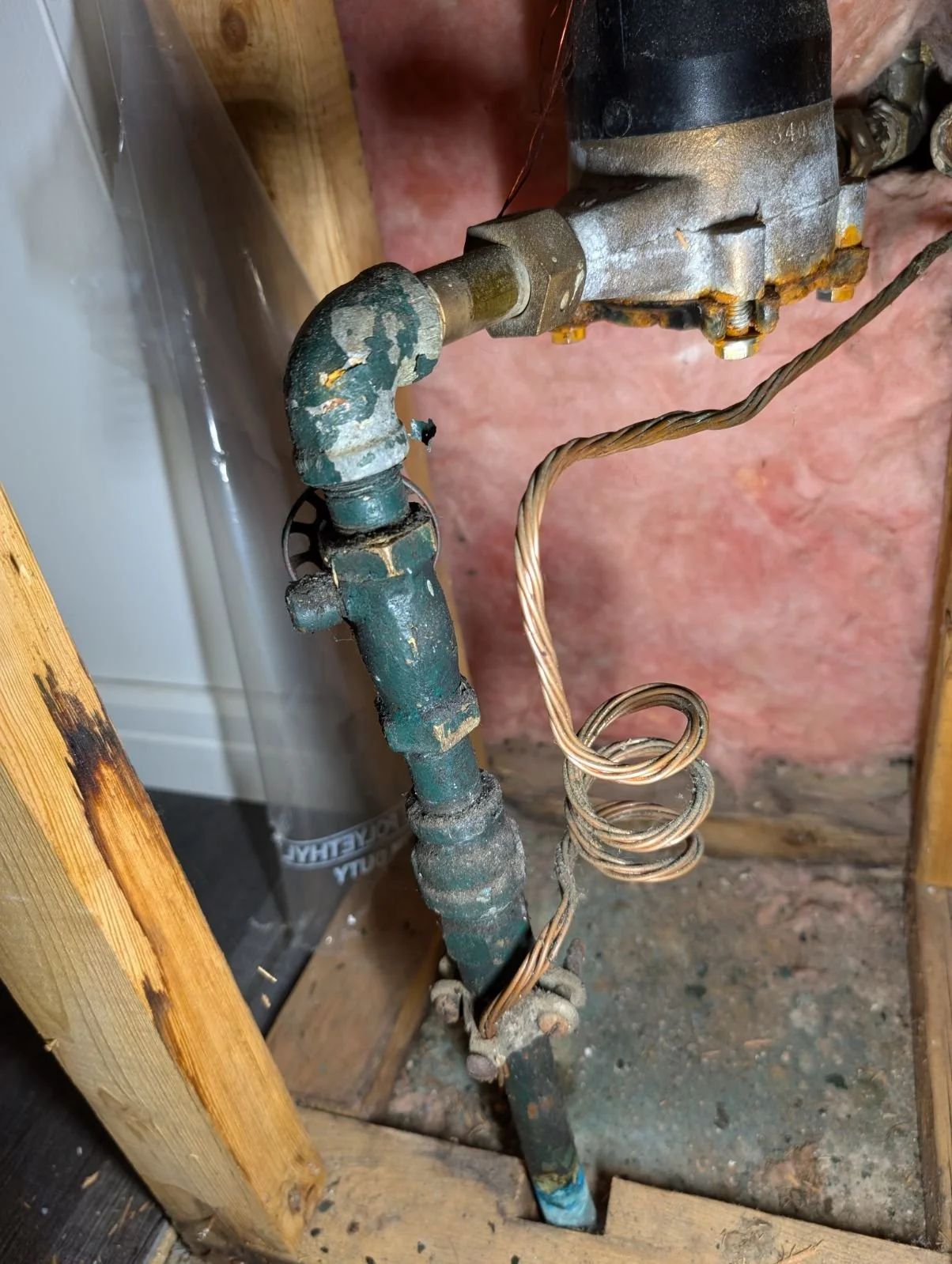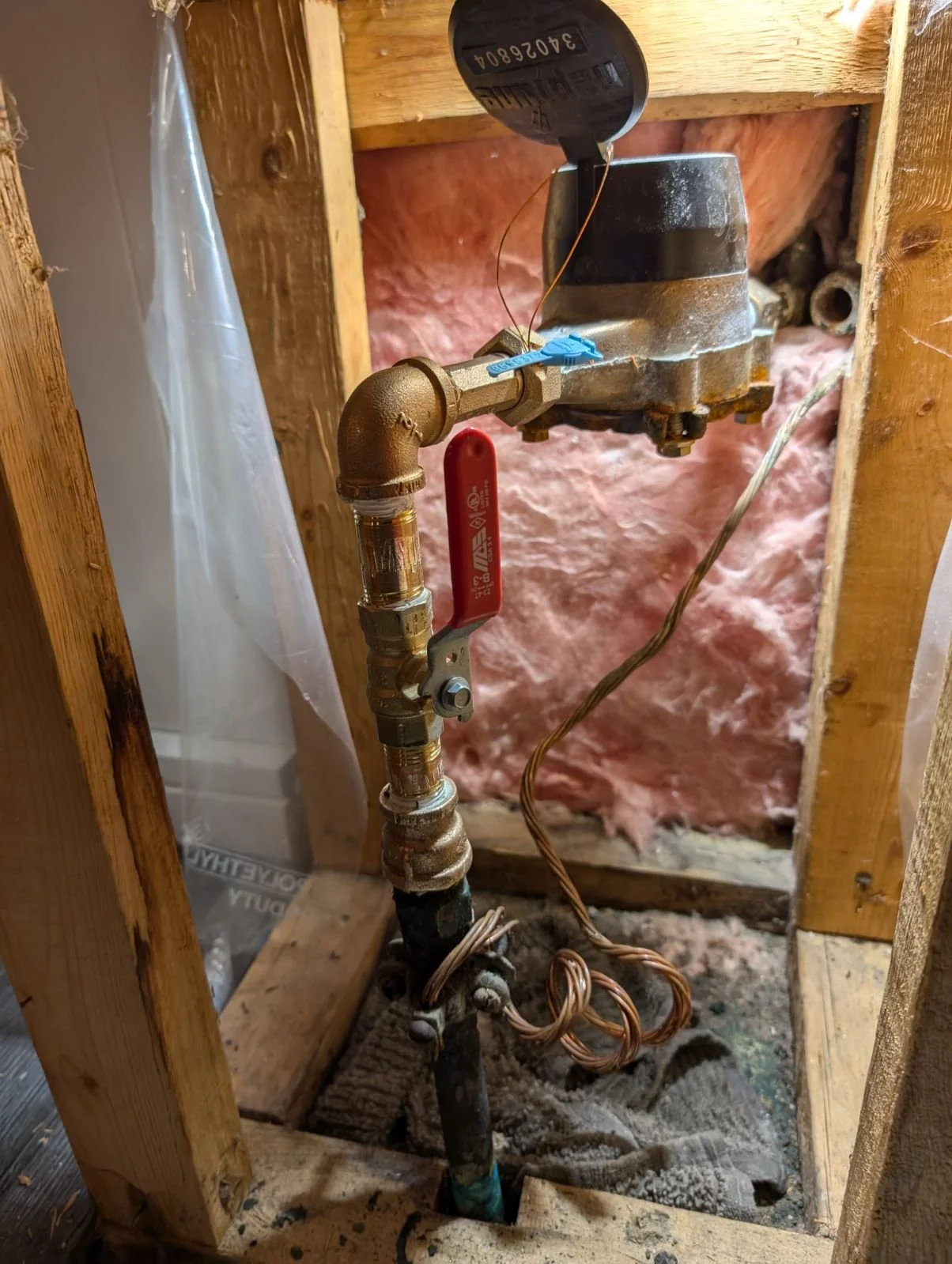Is Your Winnipeg Home Hiding These Common Plumbing Problems?
If you live in a neighbourhood built between 1900 and 1970 there are a few common plumbing problems you should know about.
Affected Neighbourhoods include but are not limited to:
St James
River Heights
Fort Rouge
St. Boniface
Old St.Vital
Winnipeg Centre
Lead Service Lines - The Hidden Danger
Your service line is the line that carries water from the city line at the street into your home. It exists between your water meter and the city’s main line. In older homes in Winnipeg many of these lines were installed using lead pipes. Lead pipes can lead to problems for Winnipeg homeowners if they are not found and fixed.
Lead has known health issues and is no longer used to bring drinking water into homes. The government of Canada classifies lead exposure, even for short periods of time, as a health risk. Lead exposure can affect brain development in children leading to lower IQs and behavioral issues. In adults lead can lead to increased blood pressure and kidney problems.
On top of this, lead can also become brittle over time. "We recently worked on a home in Saint Boniface where foundation shifting caused the old, brittle lead service line to crack underground, leading to a hidden water leak,” says Nicholas Pirotton owner of Next-Gen Plumbing and Heating. He says that this kind of leak can lead to hidden damage to the yard or the home’s foundation. These types of hidden issues can build up over time leading to high costs for homeowners once they are discovered. Because of this it is important for homeowners in Winnipeg to find out if they have lead service lines and make plans to mitigate the risks posed by lead service lines.
To find out if you have a lead service line a number of methods can be used. If the line is visible a visual inspection can be performed to see if the line is greyish black and soft or easily scraped with a knife. You can also contact Winnipeg Water and Waste to see if they have records of your service line. If you are still unsure, contact a licensed plumber.
Replacing a lead service line can be costly as the line needs to be excavated and replaced by a team of licensed professionals. However it is less expensive to replace the line before it breaks than after it has caused damage. By planning ahead you can get the best prices and avoid extra costs associated with emergency service or associated damage caused by a broken line.
Another option, if the line is still in good condition, is installing an advanced water filtration system to remove lead particles from your water supply. This can mitigate the health issues posed by lead. At Next-Gen Plumbing and Heating we can help you to determine if you have lead lines as well as providing options for repair, replacement or mitigation of issues from existing lead lines.
Galvanized Pipes & Water Pressure Woes
Galvanized pipes are steel pipes that have a thin layer of zinc on them to prevent rust and corrosion. The process of applying this layer of zinc is called: galvanizing. Pipes created from this process are called galvanized steel pipes or galvanized pipes for short.
Galvanized pipes became popular after builders and municipalities stopped using lead piping. In Winnipeg galvanized pipes can often be found in homes built between the 1930’s and 1970’s. Over time the galvanized coating on these pipes breaks down leading to issues with water pressure, leaky pipes and even health issues from impurities in the zinc coating.
One of the telltale signs of galvanized piping is low water pressure. Low water pressure in a home can be a sign that galvanized piping exists somewhere in the water system. This is because as the galvanized coating breaks down rust forms on the inside of the pipes. Over time rust buildup restricts water flow, causing low volume/pressure.
Even in homes where most of the galvanized plumbing has been replaced a small section of galvanized plumbing can lead to water pressure issues for homeowners. "A homeowner in Fort Rouge complained of terrible water pressure. We discovered that while most pipes were updated, a small section of old galvanized pipe was still present, acting like a bottleneck," says Nicholas Pirotton owner of Next-Gen Plumbing and Heating.
Not only can water flow be restricted but over time small holes can form in these corroded pipes. This leads to small leaks inside of a home’s walls that cause hidden damage. Replacing galvanized plumbing is the only way to ensure that your home is safe from leaks caused by corrosion to galvanized pipes. At Next-Gen Plumbing and Heating we have experience with repiping homes and commercial properties from galvanized to copper or PEX plumbing lines. If you suspect that you may have galvanized lines in your home give us a call today our experienced technicians can help to identify possible galvanized lines and recommend a plan to replace any galvanized plumbing.
The Missing Backwater Valve & Basement Flood Risk
Backwater valves prevent sewage backup into your home. They were not standard until the 1990s, because of this many homes in Winnipeg were not originally built with one. Unless a backwater valve was installed at some point in the home’s lifetime you could be at risk of sewage backup in your home.
A backwater valve is a simple device that is used to prevent water from the sewer system backflowing into your pipes and entering your home. This can happen during heavy rainfalls when the city’s sewer system becomes overwhelmed. By installing a backwater valve you protect your property against flooding and damage.
"Following a heavy rainstorm, we visited a beautifully renovated basement in St. James that had suffered inches of sewage backup because there was no backwater valve installed," says Nichals Pirotton, owner of Next-Gen Plumbing and Heating. While the owner was covered by insurance they had to have their entire basement remediated and renovated again. This caused the homeowner a lot of stress that could have been avoided had they installed a backwater valve.
To find out if you have a backwater valve in your home look for a round or rectangular access panel in your basement floor, often near a sump pump. Under this you will find a plumbing access that often indicates a backwater valve. If you are unsure or want your backwater valve tested we recommend calling a professional plumber. At Next-Gen Plumbing and Heating we can inspect your home to determine if you have a backwater valve and perform maintenance or if necessary installation of a new backwater valve.
Planning for the future, preventative maintenance is key
At Next-Gen Plumbing and Heating we love the history of Winnipeg. Part of the joy of our job is getting invited into people’s homes to see the unique and special ways that they are updating and preserving heritage homes. This blog was not written to scare anyone. It was written to provide solutions and advice to anyone who has purchased an older home so that they can make informed decisions about regular plumbing maintenance.
We hate seeing homeowners who have to perform emergency repairs and we always wish we could have helped them earlier to perform preventative maintenance. That is why if you have any concerns that any of these issues could exist in your home we recommend setting up an appointment with a reputable plumbing company to inspect your plumbing system. At Next-Gen Plumbing and Heating we can inspect your home’s plumbing and provide a roadmap that leads to peace of mind for you and your family.
If you would like to schedule a home plumbing inspection please give us a call a 204-292-7144 or info@next-genplumbing.ca. Thanks Manitoba and have a great day.




